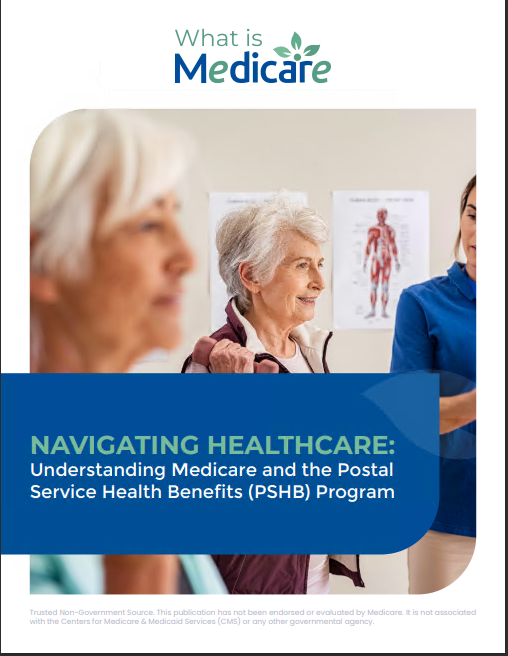Key Takeaways:
-
Medigap coverage can fill the gaps in Original Medicare, helping you manage out-of-pocket costs like copayments, coinsurance, and deductibles.
-
Choosing the right Medigap plan requires understanding how it works alongside Medicare and what costs it covers.
What Is Medigap and How Does It Work?
Medigap, also known as Medicare Supplement Insurance, is designed to help you pay for some of the healthcare costs that Original Medicare doesn’t cover. Think of it as a safety net for expenses like copayments, coinsurance, and deductibles. It’s an additional policy that works alongside your Medicare Part A and Part B coverage to reduce the financial burden of medical expenses.
Medigap doesn’t replace Medicare; it complements it. When you receive healthcare services, Medicare pays its share first, and then your Medigap policy steps in to cover the remaining eligible expenses. It’s important to note that Medigap doesn’t cover prescription drugs (that’s where Medicare Part D comes in) or other services like dental, vision, or hearing care.
Why Consider Medigap?
Medigap coverage is especially valuable if you want predictable healthcare costs and less financial stress. Medicare alone can leave you with unexpected expenses that add up quickly, such as:
-
Hospital stays, which come with daily coinsurance costs after 60 days.
-
Skilled nursing facility care, which also includes coinsurance after 20 days.
-
The Part A deductible, which applies for each benefit period.
-
The Part B coinsurance, which generally requires you to pay 20% of the cost for outpatient services.
With Medigap, these expenses are either partially or fully covered, depending on the plan you choose. This means fewer surprise bills and a clearer picture of your monthly healthcare costs.
The Standardized Plans: Choosing the Right Fit
Medigap plans are standardized, meaning each plan offers the same benefits regardless of the insurance company you choose. In most states, there are 10 plans to choose from, labeled A through N. Each plan covers a different combination of benefits, so you can select the one that best matches your needs.
Understanding Plan Coverage
Here’s a quick breakdown of what some of the most popular plans typically cover:
-
Plan F: Offers the most comprehensive coverage, paying for nearly all out-of-pocket costs that Medicare doesn’t cover. However, it’s only available to those who became eligible for Medicare before January 1, 2020.
-
Plan G: Provides robust coverage, similar to Plan F, but you’re responsible for the Part B deductible.
-
Plan N: Covers many costs but requires small copayments for doctor visits and emergency room visits.
Factors to Consider When Choosing a Plan
-
Healthcare Needs: If you expect frequent doctor visits or hospital stays, a plan with more comprehensive coverage may save you money in the long run.
-
Budget: While plans with extensive coverage might reduce your out-of-pocket costs, they often come with higher premiums. Balancing coverage with affordability is key.
-
Eligibility: If you became eligible for Medicare after January 1, 2020, you won’t have access to Plans C and F.
When to Enroll in Medigap
Timing is everything when it comes to enrolling in Medigap. The best time to buy a policy is during your Medigap Open Enrollment Period (OEP), which lasts for six months. This period begins the month you turn 65 and are enrolled in Medicare Part B.
Benefits of Enrolling During OEP
-
Guaranteed Issue Rights: During this time, insurers can’t deny you coverage or charge higher premiums due to pre-existing conditions.
-
Wider Plan Availability: You have access to all Medigap plans offered in your area.
If you miss your Medigap OEP, you can still apply for a plan, but insurers may use medical underwriting. This means they can assess your health history and potentially charge you higher premiums or deny coverage altogether.
Medigap vs. Medicare Advantage: What’s the Difference?
Many people wonder whether they should choose Medigap or a Medicare Advantage plan. While both offer ways to manage healthcare costs, they work in very different ways.
Medigap Highlights:
-
Works with Original Medicare (Parts A and B).
-
Offers predictable out-of-pocket costs.
-
Allows you to see any doctor or specialist that accepts Medicare.
-
Doesn’t include prescription drug coverage or additional benefits like vision or dental.
Medicare Advantage Highlights:
-
Replaces Original Medicare with a private insurance plan.
-
Includes additional benefits like prescription drug, dental, and vision coverage.
-
Requires you to use a network of doctors and hospitals.
-
May involve variable costs based on the services you use.
Choosing between these options depends on your healthcare needs, preferences, and budget. If you value flexibility and comprehensive coverage for out-of-pocket costs, Medigap is likely the better choice.
How Medigap Saves You Money
Medigap coverage might seem like an added expense, but it can actually save you money in the long run. Here’s how:
Covers High Out-of-Pocket Costs
Without Medigap, you’d be responsible for expenses like the Part A deductible (currently $1,676 in 2025 per benefit period) and the Part B coinsurance (20% of covered outpatient services). These costs can add up quickly, especially if you face a serious illness or require extensive medical care.
Reduces Financial Uncertainty
With Medigap, your out-of-pocket costs are more predictable. For example, if you have a plan that covers your Part A and Part B deductibles, you won’t need to worry about paying those amounts out of pocket.
Helps During Extended Hospital Stays
If you’re hospitalized for more than 60 days, Medicare requires you to pay daily coinsurance, which increases after 90 days. Medigap can cover these coinsurance amounts, providing peace of mind during long hospital stays.
Covers Travel Emergencies
Some Medigap plans (like Plans C, D, F, G, M, and N) include foreign travel emergency coverage, which pays for 80% of emergency care costs outside the U.S. (up to plan limits). This is a valuable benefit if you travel frequently and want peace of mind knowing you’re covered.
Steps to Get Started With Medigap
If you’re ready to explore your Medigap options, here are the steps to get started:
-
Review Your Medicare Coverage: Determine what Original Medicare covers and what gaps you want to fill.
-
Compare Plans: Look at the standardized Medigap plans available in your state and decide which one aligns with your needs and budget.
-
Check Enrollment Periods: Enroll during your Medigap OEP to avoid medical underwriting and access guaranteed coverage.
-
Contact Insurers: Reach out to insurance companies to compare premiums and confirm plan details.
-
Apply for a Policy: Submit your application, and once approved, your coverage will begin.
Common Questions About Medigap
Let’s address some frequently asked questions to help you feel more confident about your Medigap decision:
Can I Switch Medigap Plans?
Yes, but switching can be tricky if you’re outside your Medigap OEP. Insurers may use medical underwriting to determine your eligibility and premiums. However, some states offer guaranteed issue rights under specific circumstances.
Does Medigap Cover Prescription Drugs?
No, Medigap doesn’t include prescription drug coverage. To cover medications, you’ll need a separate Medicare Part D plan.
Can I Use Medigap With Medicare Advantage?
No, Medigap cannot be used with Medicare Advantage plans. It’s designed to work only with Original Medicare.
Will My Premiums Change Over Time?
Yes, Medigap premiums may increase due to factors like inflation, your age, or changes in healthcare costs. When comparing plans, ask insurers how they price premiums (community-rated, issue-age-rated, or attained-age-rated).
Why Medigap Could Be the Right Choice for You
Medigap coverage offers peace of mind, predictable healthcare costs, and comprehensive protection against the gaps in Medicare. Whether you’re concerned about high out-of-pocket expenses or simply want more financial predictability, Medigap could be the perfect solution to help you navigate your healthcare journey with confidence.










